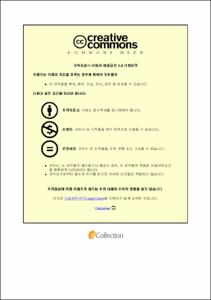유통 중의 영·유아 용품에서의 비스페놀류 화합물과 분해산물의 분석
- Alternative Title
- Analysis of Bisphenols and Their Decomposition Products in Infant Supplies Distributed in Korean Market
- Abstract
- Bisphenol consists of two phenolic groups connected to each other various types of biphenols are produced by different elements and functional groups. Typically, bisphenol A (BPA) is a raw material used for the production of polycarbonate and epoxy resin. BPA-containing plastics are used for food utensils, containers, bottles, CDs and etc. Epoxy resins containing BPA are used for food can lining and thermal paper receipts.
The epoxy resins can be produced from BADGE or BFDGE and used as stabilizing agents. Unreacted BPA, bisphenol A diglycidyl ether (BADGE) or bisphenol F diglycidyl ether (BFDGE) without reaction may remain in the material. In particular, BADGE and BFDGE coated on food cans, which are sterilized at high temperature and hydrolyzed into BADGE·2H2O and BFDGE·2H2O, respectively, during the storage of water-soluble foods. In addition, BADGE and BFDGE will be converted to BADGE·2HCl and BFDGE·2HCl, respectively, in the epoxy resin of polyvinyl chloride, resulting in transfer of the chemicals to the foods. BPA and other analogs used as plastic materials have recently become more problematic. The current safety issues of BPA are related with an endocrine disruption due to the similar structure with estrogen hormones. Studies have reported that BPA causes endocrine disruption, resulting in decreased fertility, developmental disability, and sexual maturity. Due to the harmful effects BPA, the use of the material is restricted and especially prohibited for infants and young children. The momentum is global and many countries initiated laws to ban the use of BPA in food, beverage containers and cans. In Korea, BPA, BADGE, and BFDGE and their degradation products in food utensils, containers and packaging are set and controlled by laws similarly to the European standards. Recently, in Korea, the law prohibiting the use of BPA in all food utensils, containers and packaging for infant such as tableware and straw cups has been amended.
In this study, we identified BPA as well as BADGE, BFDGE and its degradation products in infant supplies. The samples of infant supplies were selected based on the high frequency of use. BPA, BADGE and BFDGE were analyzed by high performance liquid chromatography (HPLC)-fluorescence detector (FLD). The recovery rate was 81.53-112.68%, the limit of detection was 3.75-18.68 μg/L. The limit of quantification was 12.51-65.25 μg/L. The HPLC-FLD chromatograms, in addition BPA, phenol and p-tert-butylphenol were not detected. In the current study, BPA was not observed in all the 30 samples tested and the samples were considered to the safe. However, among BFDGE, BADGE and its degradation products, there was a peak that matched to one from BFDGE·2H2O in HPLC-FLD similar with BFDGE·2H2O was detected in the HPLC-FLD chromatogram. In order to confirm that the peak was the identical with a peak from BFDGE·2H2O, LC-MS/MS analysis was performed. The analysis showed that the peak was inconsistent at the molecular weights (m /z) 181 and 133, respectively, indicating that the peak was not related with BFDGE 2H2O. In conclusion, the results indicate that the levels of BPA, BADGE, BFDGE and other decomposition products in infant supplies distributed in Korea meet the government safety regulation.
- Issued Date
- 2019
- Awarded Date
- 2019. 2
- Type
- Dissertation
- Publisher
- 부경대학교
- Alternative Author(s)
- Young Mi Lee
- Affiliation
- 부경대학교 글로벌수산대학원
- Department
- 글로벌수산대학원 식품산업공학과
- Advisor
- 김영목
- Table Of Contents
- Ⅰ. 서 론 1
Ⅱ. 재료 및 방법 8
1. 실험 재료 8
2. 표준품 및 시약 8
3. 표준 용액 제조 11
4. 비스페놀 분석방법 11
4.1. 시료 전처리 11
4.2. 기구 14
4.3. 기기 분석 14
Ⅲ. 결과 및 고찰 18
1. 직선성 18
2. 검출한계 및 정량한계 18
3. 회수율 23
4. 유통중인 영•유아용 기구 용기에서의 비스페놀류 화합물 잔류 현황 분석 26
5. 비스페놀류 화합물의 분석에 대한 국내외 동향 및 향후 과제 31
Ⅳ. 요약 35
Ⅴ. 참고문헌 37
- Degree
- Master
- Files in This Item:
-
-
Download
 유통 중의 영·유아 용품에서의 비스페놀류 화합물과 분해산물의 분석.pdf
기타 데이터 / 929.54 kB / Adobe PDF
유통 중의 영·유아 용품에서의 비스페놀류 화합물과 분해산물의 분석.pdf
기타 데이터 / 929.54 kB / Adobe PDF
-
Items in Repository are protected by copyright, with all rights reserved, unless otherwise indicated.